There pergola cultivation is a system of classic vine breeding. In reality, however, it is more correct to speak of a group of systems, as there are several variants, such as the Trentino pergola or the marquee. The vine arbors they are widespread in all Italian regions and are suitable for both professional viticulture and the cultivation of a few plants in the home garden.
In general, it is possible to cultivate pergola vines in areas where the plant is able, due to the soil and climatic conditions, to assume large dimensions. The pergola allows, in fact, to keep the clusters away from the ground and make them develop in a less humid and more ventilated environment. This technique allows to obtain high productive yields, therefore it is a training system particularly suitable for table grapes.
In this article we see what are the different vine pergola training systems and how to set them up with pruning.
When to prune the vine with a pergola
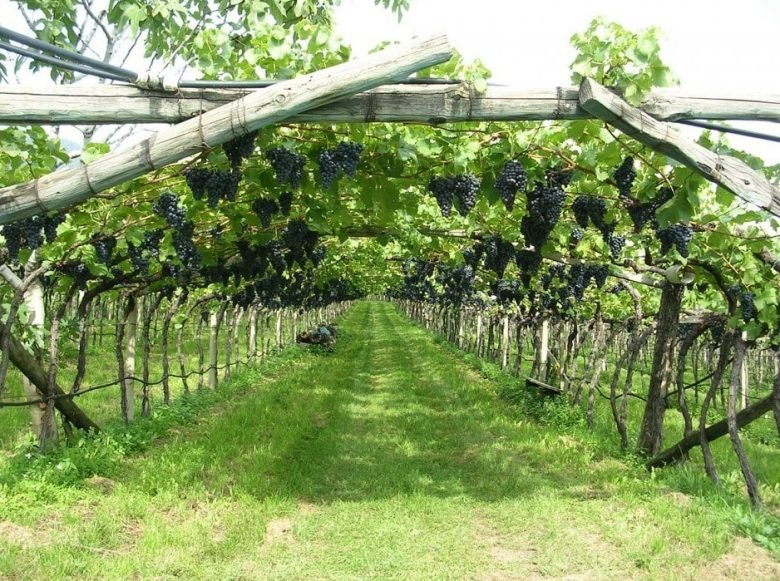
Like all forms of vineyard farming, for example the ad sapling or the spurred cordon, even for the pergola pruning of the vine the best time to act is winter. It must act in the period that goes from the fall of the leaves, up to the vegetative restart. So, in essence, it can be pruned from December to March. This type of pruning is used to give the vineyard the shape we want, which will then be maintained with the green pruning operations.
Cultivation of the Trentino pergola vine
The vines in Trentino pergolas they have the roof inclined slightly upwards (about 30 ° from the normal to the vertical pole). They can be single-pitched (simple pergolas) or double-pitched (double pergolas). The simple Trentino pergola is more common in hilly areas, the double in the plains.
Characteristics of the simple Trentino pergola
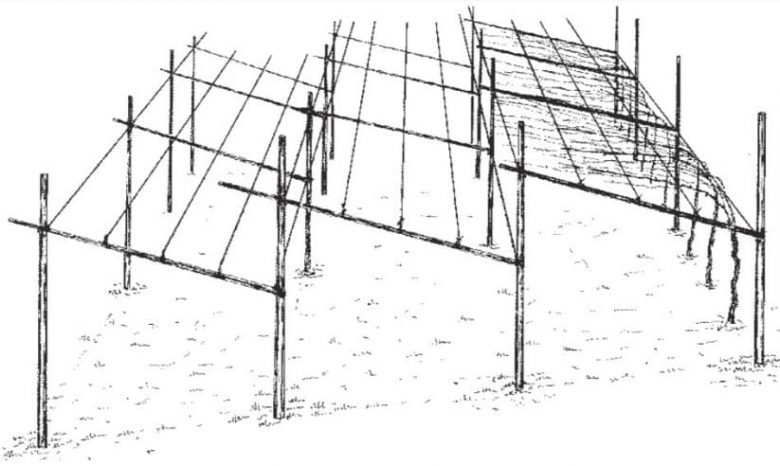
In the simple pergola, the vines are planted 80-90cm apart on the row, with rows that are 2.80-3m apart. The planting density allows for 3,700-4,400 plants per hectare. In high hill environments, where the passage of the tractor is difficult due to the steep slopes, the distance between the rows can be reduced to 2.50 m. This type of pergola allows the vines to have good insolation and, with a sixth standard, facilitates the passage of operating machines. It also allows a gradual curvature of the stem, avoiding vegetative re-growth in the heel area (ie, the intersection on the trunk and curvature of the fruiting heads).
Setting
Setting up a simple Trentino pergola requires complex and rather expensive piling. The header poles are called columns and the section bars, 2.50 m high, piles of the calcaneus.
On the latter, at a height of 1.70 m, another oblique pole is fixed, the lath, which is grafted onto the head of the section-breaking pole of the contiguous row downstream. Each vine bears 2-3 fruiting heads of about 10 buds each.
Characteristics of the double Trentino pergola
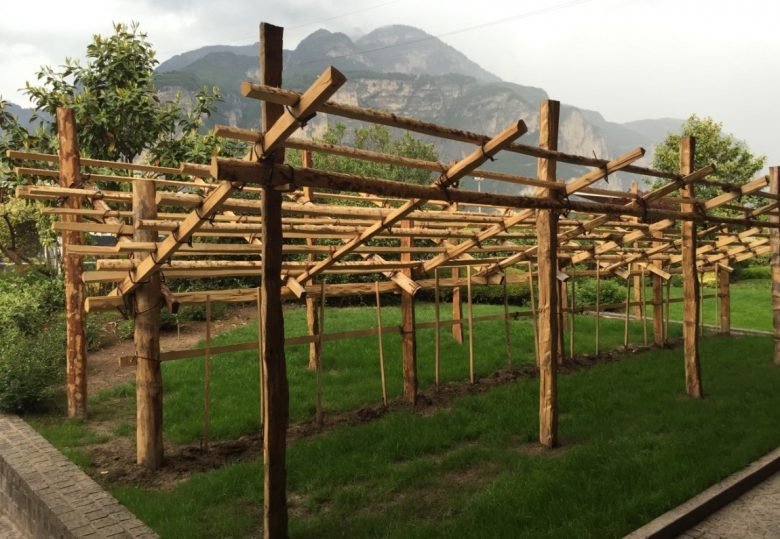
There double Trentino pergola provides for a lower planting density than the simple one. The distances, in fact, are of 50-70 cm on the row and of 5-5.50 m between the rows, keeping the heel at a height of 90 cm regardless of the inclination of the wings. In double pergolas the vertical poles carry two strips in opposite direction and much more inclined than in the simple pergola. On the oblique poles various iron wires are spread parallel and at a distance of 30-35 cm, which form the roof of the pergola. Cultivation pruning is carried out by bringing the most developed and best formed branch to the height of the first line, leaving only 2-3 buds at the top, while the others are blinded. We will then continue with the Guyot pruningkeeping 2-3 fruiting heads per plant.
Cultivation of the awning pergola
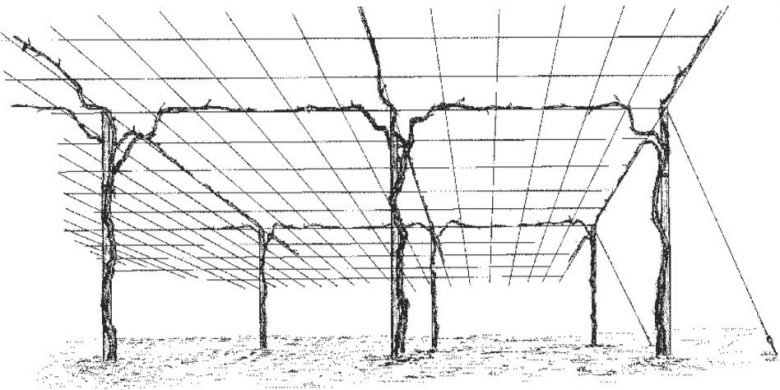
The awning pergola is characterized by the high productivity of the vine plant. For this reason, according to the production regulations, it is to be used only for table grapes. This type of vine cultivation is used in warm regions, in Italy it is very present in regions such as: Lazio, Puglia, Sicily, Molise. Abroad it is strongly adopted in Spain and Argentina.
In the marquee breeding, the salient feature is the clear separation between the vegetative and productive areas. In practice, in this form of farming, the vegetation is located above the pergola, while the clusters are below, where they mature away from solar radiation. In phenological phase of productionthe awning screw is 1.8-2.20m high.
Setting
From the vine, 4 fruit heads of 8-10 buds each branch out in a crosswise position. It is necessary to make sure to build a continuous covering over the whole ground, by placing the plant on a weft of iron wires supported by the guardian poles.
The most used planting layout is that of 2.50 x 2.50 m, with a density of 1,600 plants per hectare.
Spoked screw or Bellussi
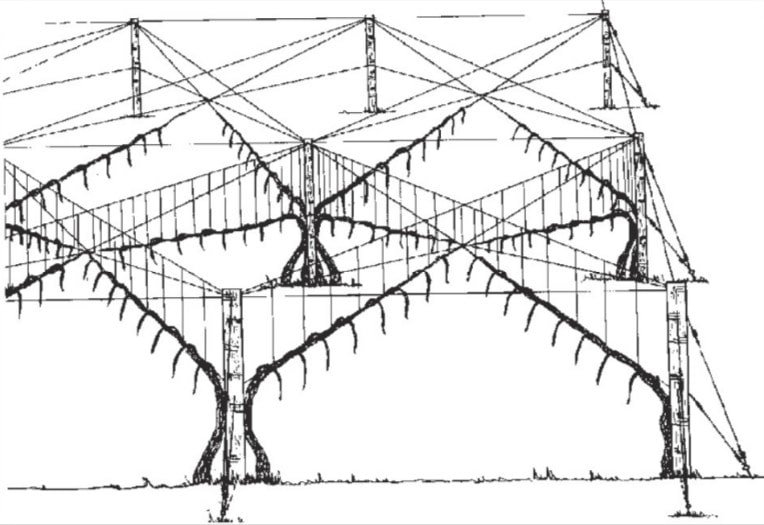
This type of pergola cultivation of the vine is widespread above all in the fresh and fertile soils of Emilia-Romagna and Veneto. It was conceived in 1882 in Tezze di Piavea town in the Treviso plain, by the Bellussi brothers, from whom it took its name.
In classical Bellussi there are 4 vine plants supported by a pole, each of which gives rise to a permanent inclined cord, pulled into the inter-row. The vineyard, seen from above, looks like one halo.
Setting
The planting distances are 8-10 m between the rows and 4-6 m on the row, between pole and pole (which supports the group of 4 screws). The density per hectare is one thousand plants. The supporting scaffolding of the Bellussi pergola is very complex. Large wooden poles are used (basically beams) that protrude from the ground by 4 m. Around the perimeter, the vineyard must be firmly fixed to the ground with underground concrete anchors, connected to the perimeter poles with metal wires.
The structure of the vineyard is made up of two networks: a main one which, by joining the poles together, supports the vineyard; a secondary one, lower, which supports the permanent cords.
Pruning of the Bellussi system
The Bellussi pergola is a long-pruned training system. It consists of a vertical stem 1.20-1.60 high which extends into a horizontal cord, on which 10-12 long pruned shoots curved downwards are inserted.
In production, each fruiting head is left with 8-10 buds, for a total of 80-120 buds per plant. It is an expanded form of farming which, given the management difficulties, is gradually being abandoned to favor more rational forms.

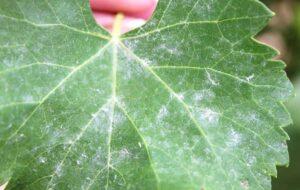
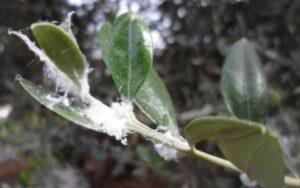
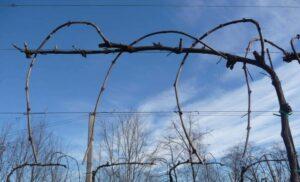
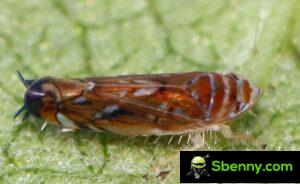
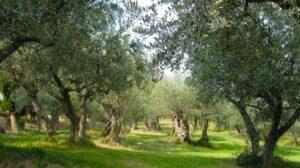
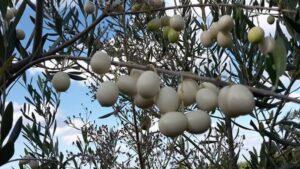
Start a new Thread